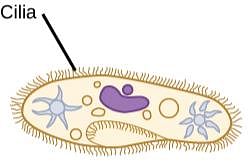Test: Biological Classification - 1 - NEET MCQ
20 Questions MCQ Test Biology Class 11 - Test: Biological Classification - 1
All prokaryotic, unicellular organisms are included under kingdom______.
Why are viruses not included in any of the five kingdoms?
| 1 Crore+ students have signed up on EduRev. Have you? Download the App |
In which class of fungi the mushroom belongs to?
The five kingdom classification was proposed by______.
Which one is important in nutrient recycle and act as decomposer and mineralisers of the biosphere?
Which of the following pairs include photosynthetic and saprophytic/heterotrophic organisms respectively?
The primitive prokaryotes responsible for the production of biogas from the dung of ruminant animals, include the ______.
Which of the following is incorrect about Cyanobacteria?
Which of the following organisms can be found in extreme saline conditions?
The _____ spores are conidia produced ________ on the special mycelium called conidiophores whereas ______spores are ascospores which are produced _________in sac likec asci.

Identify the above process in bacteria and identify part A,B &C:
In five kingdom of classification, Whittaker assigned eukaryotes to______.
Which among the following can’t produce spores sexually?
What are the two distinct phases in the life cycle of plants?
How do two haploid hyphae of compatible mating types reproduce in some fungi?
|
181 videos|361 docs|148 tests
|
























